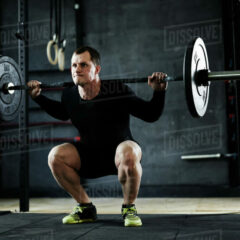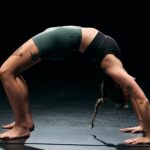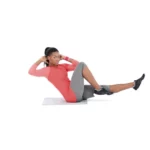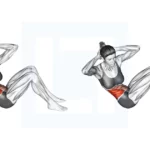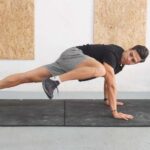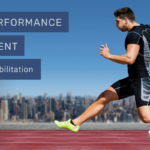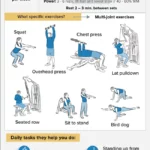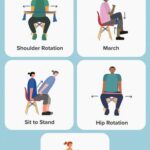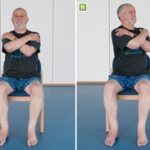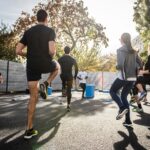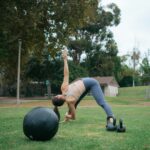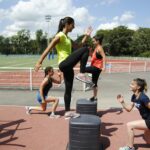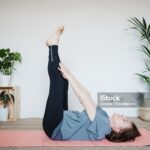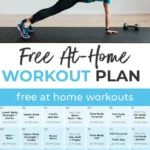https://weightliftingforpower.com/core-power-for-beginners-essential-exercises-to-build-a-solid-foundation/
Core Power For beginners is all about stability and balance. Think of your core as the central link connecting your upper and lower body. It isn’t just about having toned abs, but it plays a vital role in almost every movement you make, whether reaching up to a shelf or bending to tie your shoes.
The core comprises various muscle groups encircle your torso, such as the rectus abdomens and obliques. Strengthening the transverse abdominis and the muscles in your back and hips is essential for overall stability and injury prevention. These help support your spine, maintain posture, and provide balance.
A strong core goes beyond aesthetics. It improves posture and balance, stabilizes movements, and helps prevent injuries, especially back pain. A strong core makes everyday tasks more manageable and significantly enhances your performance in sports and physical activities. Investing time in core strengthening can transform how you move and perform.
There are some common myths surrounding core strength training. One big misconception is that core exercises and ab workouts are the same — but true core strength involves much more than just your abs. Many think endless crunches are the key, but incorporating various exercises targeting all core muscles is essential for a well-rounded strength program.
Preparing for Core Training: Establishing the Right Mindset
Setting realistic goals is step one when starting your core training. It’s easy to get carried away watching fitness gurus, but remember, everybody is different, and progress takes time.
Creating a safe environment for your workouts is crucial. This means having enough space to move comfortably and a surface that provides good support and grip. Proper attire—like clothes that won’t restrict movement and sneakers with good traction—also makes a difference.
Listening to your body is key. Understanding your limits is crucial for maintaining your well-being. Pushing yourself too hard can result in burnout or injury, affecting your well-being and stalling your progress. Balance is key to achieving lasting results. Making self-care a priority is crucial for sustainably reaching your goals. Investing in your well-being enables you to pursue success without burning out. Prioritizing your well-being is essential for achieving lasting success and fulfillment. Focus on gradual improvement and recognize the signals your body gives you.
Consistency beats intensity every time. Committing to regular workouts, even short, will yield better results in the long run. Don’t forget that rest is part of the process—muscles grow stronger during recovery.
Building core strength is not a race. It’s about forming a habit that becomes part of your lifestyle. Patience is your friend here, and the benefits that come when you stick with it make every bit of effort worth it.
Essential Core Exercises for Beginners
When starting core exercises, variety is your ally. Planks are foundational. They might look simple, but they engage multiple muscle groups at once. For beginners, the modified plank is a great starting point. Try holding it for 15 seconds, then gradually increase over time. Side and reverse planks add challenges and variety while targeting different parts of the core.
Bridge exercises are excellent for the core, lower back, and glutes. The standard glute bridge is a versatile move you can do practically anywhere. Once comfortable, consider adding variations like single-leg bridges to increase the difficulty and further engage stabilizing muscles.
For ab-focused exercises without equipment, bicycle crunches, and V-sits are effective. These exercises effectively engage and strengthen both your upper and lower abdominal muscles, helping you achieve a toned core. Prioritize smooth and controlled movements over speed; this approach significantly lowers the risk of injury and enhances your overall performance.
Breathing is more important than it seems. Proper breathing techniques help maintain form and optimize the effectiveness of each exercise. Focus on inhaling through the nose during the easier phase and exhaling through the mouth during exertion. It not only helps with stamina but also engages the core more efficiently.
Incorporating Core Training into Your Routine
Integrating core exercises into your overall workout plan creates a balanced approach to fitness. While focusing solely on the core is tempting, working on full-body strength is essential to complement and enhance your core stability.
Creating a weekly exercise routine that integrates core workouts with different training modalities, such as cardiovascular exercises, flexibility routines, and strength training, can lead to outstanding outcomes. For beginners, aim for core workouts two to three times a week. This ensures you’re targeting muscles adequately while allowing for necessary recovery.
Tracking your progress keeps you motivated. Use a journal or fitness app to record your exercises, duration, and improvements. Seeing how much you’ve improved in strength and endurance fuels determination and gives a sense of accomplishment.
Maintaining motivation and commitment over time is often challenging, but variety in your routine helps keep things interesting. Mixing up your exercises or exploring new activities is a great way to keep things fresh and exciting. Don’t let monotony take away your motivation! Incorporating a social aspect, such as a workout buddy or group classes, can boost enthusiasm and accountability.
https://www.wealthyaffiliate.com?a_aid=352a86b2
https://weightliftingforpower.com/functional-fitness-techniques/
https://weightliftingforpower.com/sports-performance-enhancement/
